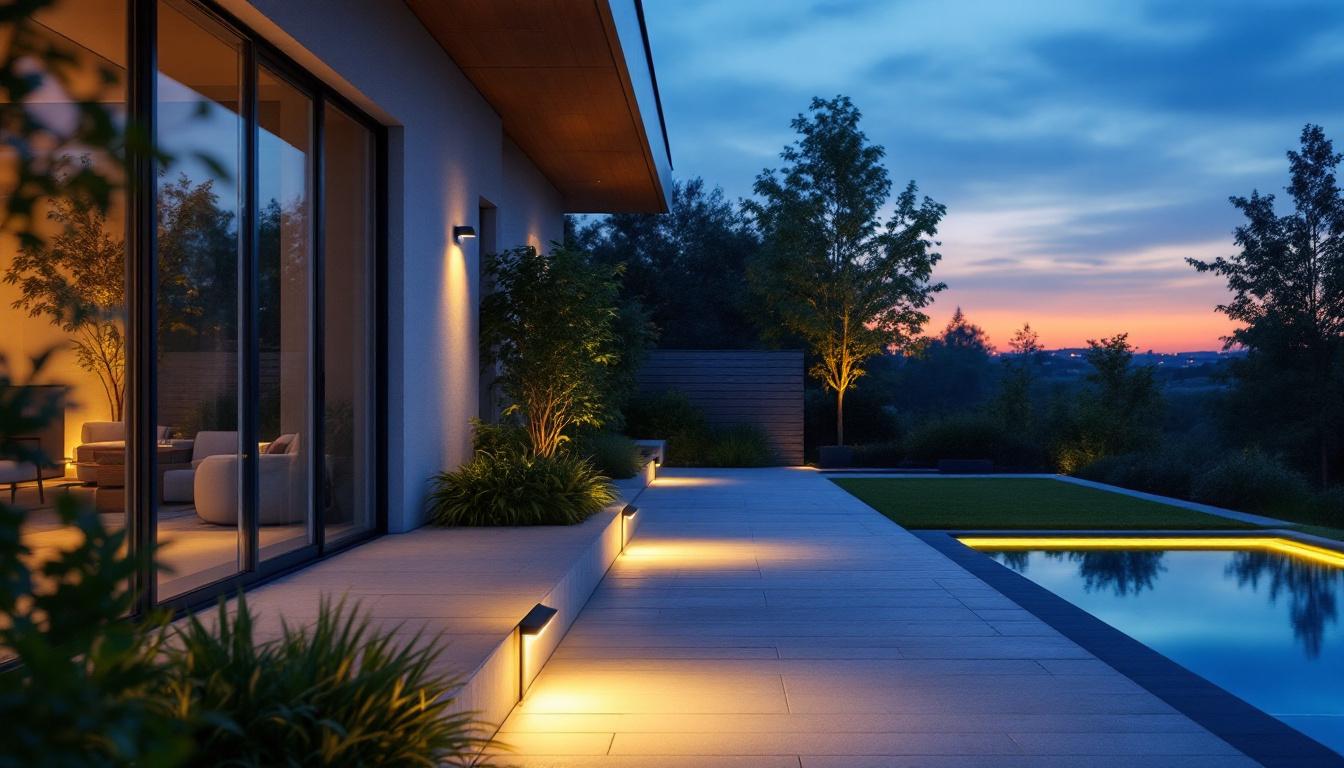
In the ever-evolving world of construction and design, suspended ceiling lighting has emerged as a transformative element for lighting contractors. This innovative approach not only enhances the aesthetic appeal of a space but also provides functional benefits that can streamline the work of professionals in the field. By understanding the nuances of suspended ceiling lighting, contractors can elevate their projects and meet the diverse needs of their clients.
Suspended ceilings, often referred to as drop ceilings, offer a unique platform for integrating lighting solutions. They allow for the easy installation of various lighting fixtures, creating a harmonious blend of style and utility. This article delves into the intricacies of suspended ceiling lighting, exploring its advantages, installation techniques, and the future trends shaping the industry.
One of the primary advantages of suspended ceiling lighting is its versatility. Contractors can choose from a wide array of lighting fixtures, including recessed lights, panel lights, and even decorative pendants, allowing for a customized look that can fit any design theme. Moreover, the ability to adjust the height of the ceiling can significantly influence the ambiance of a room, making it feel more spacious or intimate, depending on the desired effect. This adaptability is particularly beneficial in commercial spaces, where different areas may require distinct lighting solutions to cater to various activities and moods.
In addition to aesthetic versatility, suspended ceiling systems also facilitate improved energy efficiency. Many modern lighting fixtures designed for suspended ceilings are LED-based, which consume significantly less energy than traditional incandescent bulbs. This shift not only reduces electricity costs but also contributes to sustainability efforts, as LED lights have a longer lifespan and lower environmental impact. Furthermore, the design of suspended ceilings allows for better integration of smart lighting technologies, enabling contractors to implement advanced control systems that can adjust lighting levels based on occupancy or natural light availability, thus optimizing energy use even further.
One of the most significant advantages of suspended ceiling lighting is the aesthetic enhancement it brings to a space. With the ability to incorporate different styles of fixtures, contractors can create a visually appealing environment that aligns with the design vision of their clients. Whether it’s a sleek, modern look or a more traditional ambiance, suspended ceilings allow for flexibility in design.
Moreover, the use of recessed lighting within suspended ceilings can create a seamless appearance, eliminating bulky fixtures that disrupt the flow of a room. This minimalist approach not only makes spaces look larger but also emphasizes other design elements, such as wall art or architectural features. The interplay of light and shadow created by strategically placed fixtures can add depth and character to a room, inviting occupants to engage with the space in a more meaningful way. Additionally, the ability to install dimmable lights within suspended ceilings allows for customizable lighting scenarios, enabling users to adjust the mood according to the time of day or specific activities.
Another compelling reason to consider suspended ceiling lighting is its potential for improved energy efficiency. Many modern lighting fixtures are designed with energy-saving technologies, such as LED bulbs, which consume significantly less power than traditional lighting options. By integrating these fixtures into suspended ceilings, contractors can help clients reduce their energy bills while also contributing to environmental sustainability.
Additionally, suspended ceilings can enhance the distribution of light throughout a space. By strategically placing fixtures, contractors can minimize the number of lights needed, further optimizing energy consumption. This not only benefits the client’s wallet but also positions contractors as responsible and forward-thinking professionals. Furthermore, the reflective surfaces often found in suspended ceilings can amplify the effectiveness of the lighting, allowing for a brighter environment without the need for excessive wattage. This not only leads to lower energy costs but also extends the lifespan of the lighting fixtures, as they are not overworked, creating a win-win situation for both the environment and the client’s budget.
Before diving into installation, careful planning and design considerations are crucial. Contractors should assess the specific needs of the space, including the type of lighting required, the height of the ceiling, and the overall layout. Collaborating with designers and architects can provide valuable insights into the most effective placement of fixtures.
Creating a detailed lighting plan that outlines the placement of each fixture can help streamline the installation process. This plan should consider factors such as the intensity of light needed for different areas, potential obstructions, and the desired ambiance. By investing time in the planning phase, contractors can avoid common pitfalls and ensure a smoother installation experience.
Additionally, it’s important to consider the energy efficiency of the lighting options being selected. LED fixtures, for instance, not only provide excellent illumination but also consume significantly less power compared to traditional incandescent bulbs. This not only contributes to lower energy bills but also aligns with sustainable building practices, which are increasingly becoming a priority in modern construction. Furthermore, integrating smart lighting controls can enhance functionality, allowing for adjustments in brightness and color temperature to suit various activities throughout the day.
The installation of suspended ceiling lighting involves several key steps that contractors should follow for optimal results. First, the grid system for the suspended ceiling must be installed, ensuring it is level and securely anchored. This framework serves as the foundation for the lighting fixtures.
Next, contractors should install the electrical wiring and make connections to the fixtures. It is essential to adhere to local electrical codes and safety regulations during this phase. Once the wiring is in place, the lighting fixtures can be mounted according to the pre-established plan.
Finally, testing the lighting system is crucial. This step ensures that all fixtures are functioning correctly and that the desired lighting effects have been achieved. Any adjustments can be made at this stage to enhance the overall performance of the lighting system. Moreover, it is advisable to conduct a walkthrough with the design team and stakeholders to gather feedback on the lighting’s effectiveness in achieving the intended atmosphere. This collaborative review can lead to further refinements, ensuring that the lighting not only meets functional requirements but also elevates the aesthetic appeal of the space.
As technology continues to advance, the integration of smart lighting systems into suspended ceilings is becoming increasingly popular. These systems allow for remote control and automation of lighting, enabling users to adjust brightness, color temperature, and even create lighting schedules through smartphone applications.
For lighting contractors, this trend presents an opportunity to offer clients cutting-edge solutions that enhance convenience and energy efficiency. By staying informed about the latest smart lighting technologies, contractors can position themselves as leaders in the industry, providing clients with modern, user-friendly options.
Another significant trend is the growing emphasis on sustainability in lighting design. As businesses and individuals become more environmentally conscious, the demand for eco-friendly lighting solutions is on the rise. Contractors can respond to this trend by promoting energy-efficient fixtures and sustainable materials in their projects.
Additionally, the use of natural light in conjunction with suspended ceiling lighting is gaining traction. By incorporating skylights or large windows, contractors can create spaces that maximize natural illumination, reducing reliance on artificial lighting. This not only enhances the overall aesthetic but also contributes to a more sustainable approach to lighting design.
While suspended ceiling lighting offers numerous benefits, it is not without its challenges. One of the primary difficulties faced by lighting contractors is the complexity of installation. The need for precise measurements and careful planning can make the process time-consuming and demanding.
Moreover, navigating the various electrical codes and safety regulations can add an additional layer of complexity. Contractors must ensure that all installations comply with local standards to avoid potential legal issues and ensure the safety of the end-users.
Another challenge is educating clients about the benefits and options available with suspended ceiling lighting. Many clients may be unaware of the potential advantages or may have preconceived notions about traditional lighting methods. Lighting contractors must take the time to explain the benefits, address concerns, and provide examples of successful projects.
This educational aspect is crucial for building trust and ensuring that clients feel confident in their decisions. By taking the initiative to inform clients, contractors can foster stronger relationships and ultimately lead to more successful projects.
Suspended ceiling lighting is revolutionizing the way lighting contractors approach their work. With its myriad of advantages, including enhanced aesthetics, improved energy efficiency, and the potential for smart integration, it is becoming an essential component of modern lighting design.
By understanding the installation techniques, staying abreast of future trends, and addressing the challenges that arise, lighting contractors can position themselves as experts in this evolving field. As the demand for innovative lighting solutions continues to grow, embracing suspended ceiling lighting will undoubtedly enhance the capabilities and offerings of lighting contractors.
In a world where design and functionality must coexist, suspended ceiling lighting stands out as a transformative solution that meets the needs of both contractors and clients alike. By leveraging this approach, lighting professionals can not only elevate their projects but also contribute to a more sustainable and aesthetically pleasing built environment.
Ready to harness the power of suspended ceiling lighting and take your projects to the next level? At LumenWholesale, we provide lighting contractors with the highest quality, spec-grade lighting products at prices that can’t be beaten. Say goodbye to local distributor markups and hello to our extensive selection that meets rigorous industry standards. With free shipping on bulk orders, you can trust that you’re getting premium lighting at the best value — no hidden fees, no compromises. Elevate your lighting game and experience the seamless blend of quality, affordability, and convenience that only LumenWholesale can offer. Discover our range and start transforming your lighting projects today by visiting Wholesale Lighting at the Best Value.

Discover how decorative solar lights are revolutionizing outdoor spaces for lighting contractors.

Discover innovative strategies employed by smart lighting contractors to integrate solar lights into modern infrastructure.

Discover how lighting contractors can enhance energy efficiency and client satisfaction by selecting the perfect commercial ceiling fan.

Discover the innovative strategies smart lighting contractors use to retrofit 8-inch LED recessed lighting.